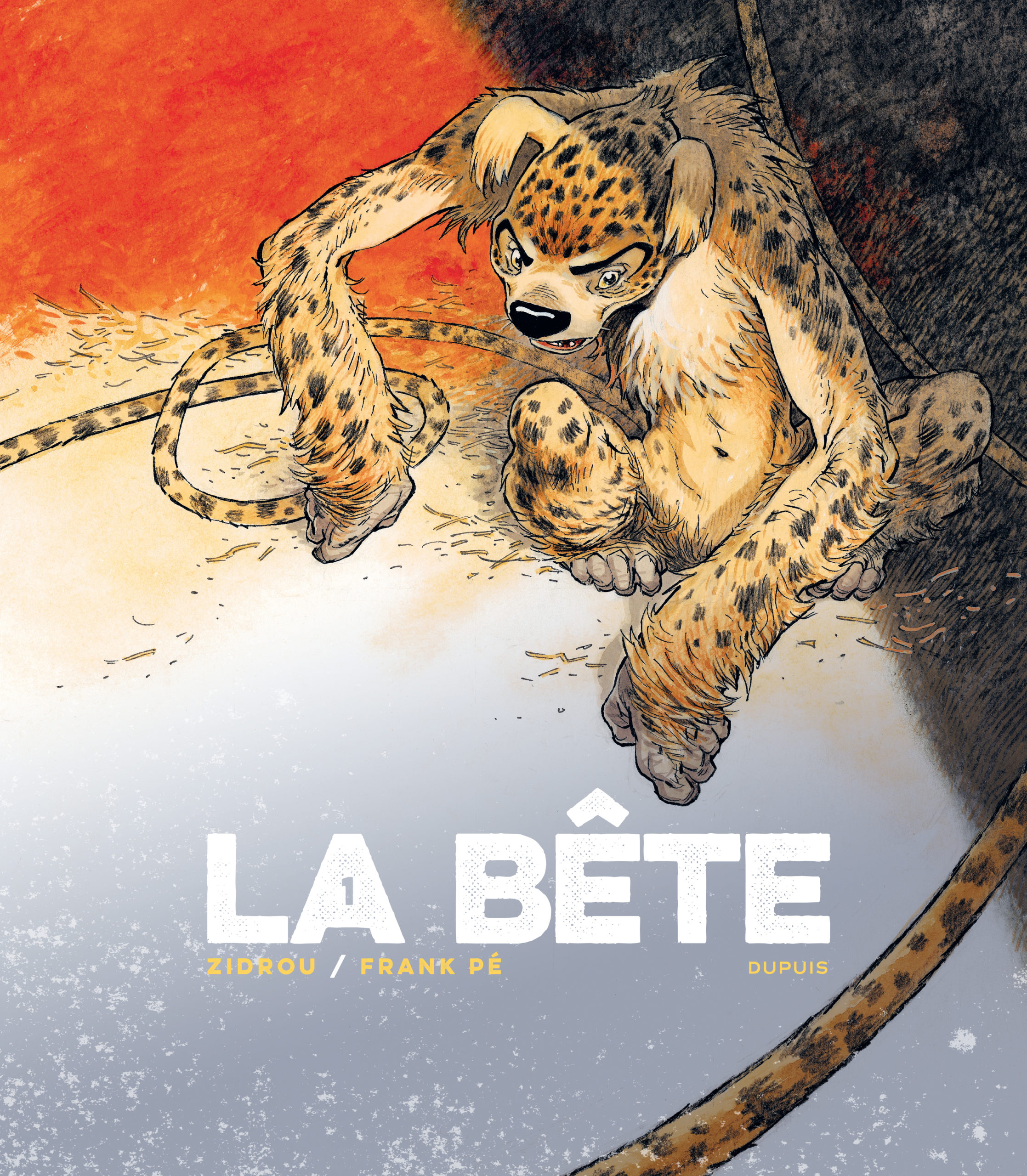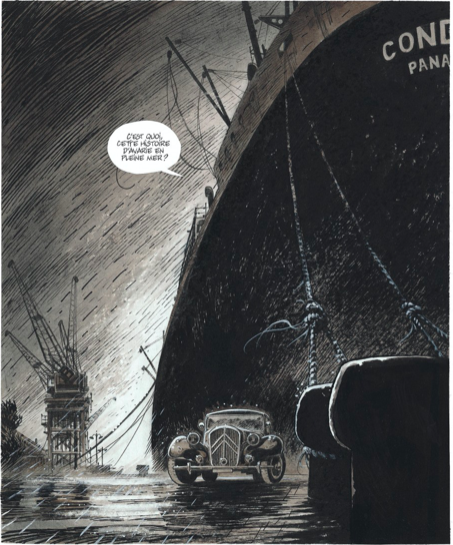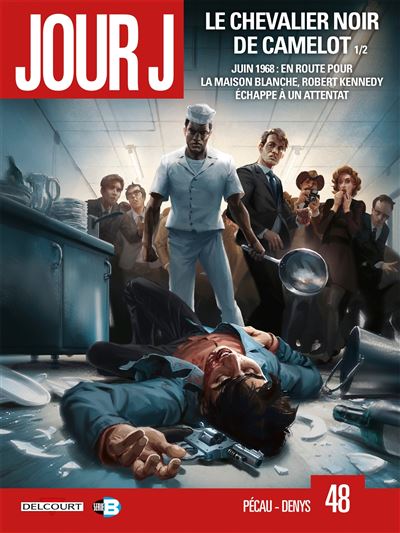What if a Marsipulami had arrived in Belgium in the 50s? This is the hypothesis posed by Frank Pé and Zidrou in the first volume of La bête published by Dupuis. 
An atmosphere between horror and childhood
At night and in the rain, a boat has just arrived on a desert quay of a port on the Belgian coast. Two owners come to recover their hidden contraband merchandise. They are guided by the captain in the hold. Unfortunately, damage delayed the arrival of the boat and the exotic animals ordered were mostly dead.To search for the surviving animals, the trio torches containers and cages illuminating the surrounding darkness to reveal dead animals. Only one Marsipulami survived , but he managed to flee. As in a horror movie, the title imposing itself on a double page arrives. This beginning of the story is very successful because it imposes a gloomy atmosphere and the rest of the first volume tells us how this tropical animal will try to survive in a flat country very cold. Indeed, the story takes place in a Belgium still marked by the Second World War. Poverty is high and hunger is still present. The collaboration, although very present, has become shameful and Mademoiselle van den Bosche is rejected because she had fallen in love with a German. His son François is harassed by his classmates because he was born from this shameful relationship. To illustrate this context, Zidrou does not hesitate to show the violence of children among themselves but adults are just as insensitive. The theme of reconstruction is at the heart of the story. We see how a family is rebuilt in parallel with the rise of a country and the Marsupilami's attempt to survive. Francis will find poor Marsupilami hungry and almost dying. He goes to collect him because he sees in him a friend while the closed adults think only of the danger represented by this angry animal.
A nostalgic tale
This book is also a tribute to the creature created by Franquin and more generally to the Franco-Belgian comic book series of the 50s and 60s. For example, the name of the ship's captain, Tillieux, is a tribute to a famous cartoonist of the newspaper Spirou. To show this Belgian roots, the dialogues use popular expressions in Walloon and Flemish. If it is instructive, this choice moves the reading away from a universal character. We also feel this nostalgia by the choice of the historical setting especially in the presentation of the school of the fifties. Mr. Boniface, a modernist teacher, clashes with his embittered and conservative director while showing a Chaplin film. Yet he wants to help children learn by making them happy. As in the student Ducobu, we can find this demonstration of well-being at school outdated and heavy by demonstrative dialogues. Indeed, only Professor Boniface is touched by the suffering of François and he is even a transi lover of the mother of one of his students.
The Beast: A Magnificent Drawing by Frank Pé
 Frank Pé's drawing serves the narrative admirably. At first, the chilling atmosphere of realistic animal corpses contrasts with the roundness of the very classic Franco-Belgian comic strip faces. The reader then loses his bearings: is he in a youth or adult comic? All this story is embedded in a luxurious edition that is marked from the cover with a raised title and an original square format. This format allows the designer to compose very large boxes like an image in cinemascope. This first volume of a reinvention of the origins of the Marsupilami is a splendid work by the talent of a unique draftsman. The reader takes the time to admire the work of Frank Pé who takes this classic story to a great sensitivity. As the volume concludes with an image of the animal's empty doghouse, the reader is eager to know if the Marsupilami will survive.
Frank Pé's drawing serves the narrative admirably. At first, the chilling atmosphere of realistic animal corpses contrasts with the roundness of the very classic Franco-Belgian comic strip faces. The reader then loses his bearings: is he in a youth or adult comic? All this story is embedded in a luxurious edition that is marked from the cover with a raised title and an original square format. This format allows the designer to compose very large boxes like an image in cinemascope. This first volume of a reinvention of the origins of the Marsupilami is a splendid work by the talent of a unique draftsman. The reader takes the time to admire the work of Frank Pé who takes this classic story to a great sensitivity. As the volume concludes with an image of the animal's empty doghouse, the reader is eager to know if the Marsupilami will survive.








































